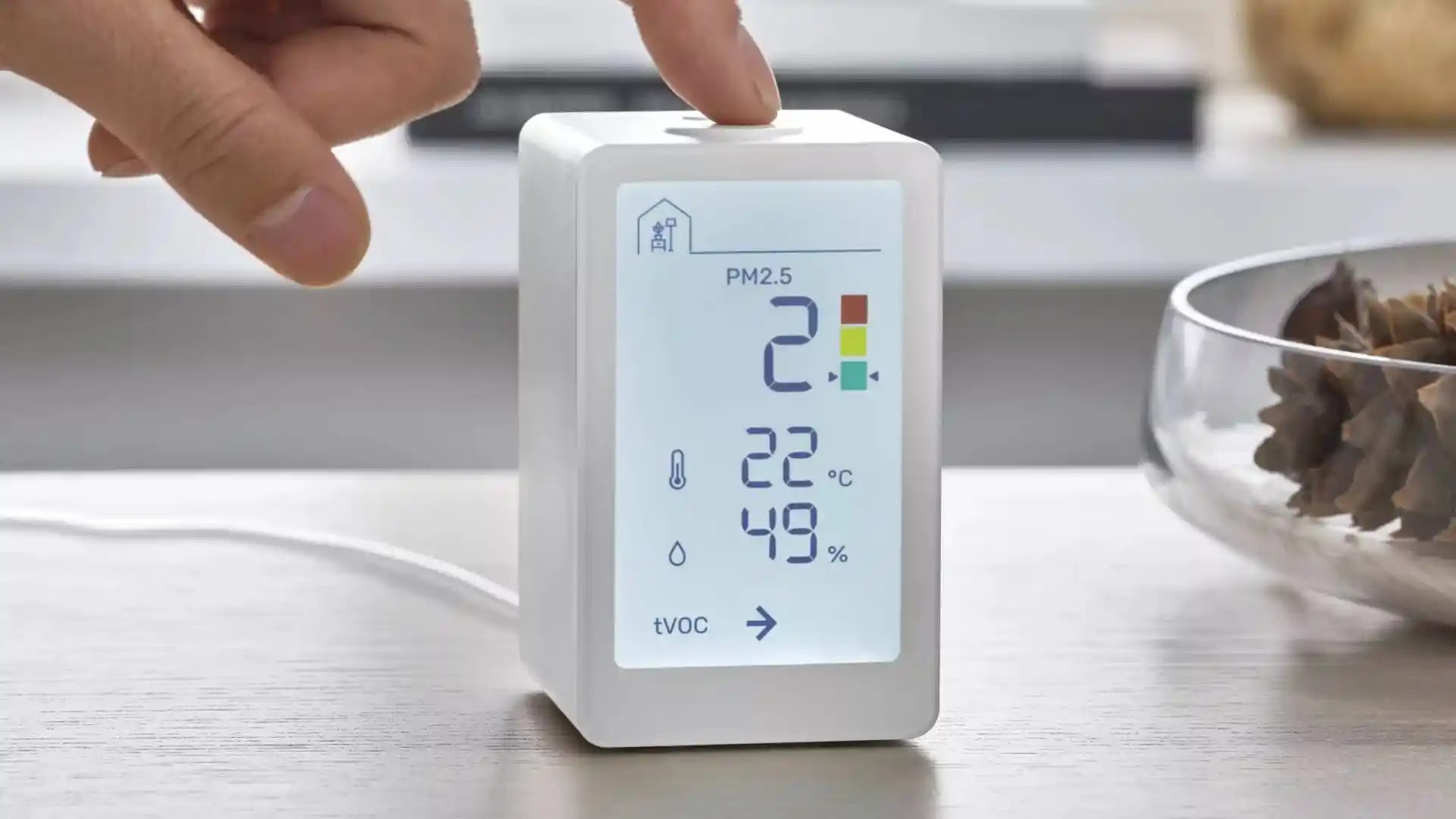Smart sensor from IKEA to detect air pollutants in the home
IKEA has added a new product to its list of smart home products that will make the home noticeably healthier. With a new sensor from IKEA indoor air pollutants in the home can now be detected to help make the air cleaner.
Vindstryka's new air quality sensor measures a type of "particulate matter" known as PM2.5, which is invisible to the naked eye and can pass through your lungs into your bloodstream. In the home, these respirable particles are usually produced by cooking, candles, some types of heating, and tobacco smoke.
Besides PM2.5, Vindstryka also measures humidity, temperature and TVOC (total volatile organic compound), which measures pollution levels for various gases. On the downside, the IKEA sensor does not measure carbon dioxide or carbon monoxide, which means it is not a comprehensive, stand-alone solution.
However, Vindstryka does have a handy screen to show you live readouts of everything you're following, and its main benefit is that it connects to IKEA's new Dirigera smart home platform. This means it can be used to automatically turn on other smart home devices, such as fans or air purifiers, based on air quality readings.
Of course, IKEA makes its own versions of these devices, including the Starkvind air purifier. You can connect this to a Vindstryka air quality monitor, and it will automatically adjust fan speeds based on the amount of PM2.5 in the air.
The Vindstryka sensor will be available for purchase from April, though IKEA has yet to share official pricing. Some rumors indicate that its cost will be in the range of 39 euros.
Do we need a smart home air quality sensor?
There is evidence that our indoor air often contains some hidden harmful substances, such as the PM2.5 particles that our IKEA monitor detects. For example, the Environmental Protection Agency has found that levels of certain irritating gases are, on average, two to five times higher in our homes than they are outside. Separate studies from Dyson found this was exacerbated during global pandemic lockdowns.
With a study from the World Health Organization also finding that 3.2 million deaths per year are caused by household air pollution, there is clearly some benefit in tracking and tackling pollutants in your home — especially if you spend a great deal of time indoors while working from home.
IKEA acknowledges that the Vindstryka sensor is not a panacea, saying that “we know there is no single solution to indoor air pollution” and that it exists in part to raise awareness.




